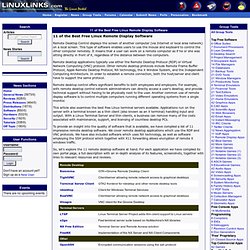

Combine Multiple Partitions into One with mhddfs in Linux. Let’s consider the following scenario: You have 3 hard disks (or partitions) – 100Gb, 100Gb, and 64Gb respectively, and you have a huge media library (videos and audios) of, say, 180GB.

It is obvious that all your media files won’t be able to fit into one hard disk/partition, and you have to split them up to store them in different locations. While this is a no-brainer, you will have a hard time managing your files, as all of them are now scattered all over the place. There are a few solutions. You can get a new and bigger hard drive to house your media content, but that means spending money, and you are not making good use of your existing storage space.
Another solution is to set up RAID so that files can be spread evenly across the various disks, but the lack of redundancy could be a cause for concern. mhddfs is a FUSE filesystem module that allows you to combine several partitions (or hard disks) into one virtual drive. Sudo apt-get install mhddfs. Linux и бесплатные облачные хранилища. В попытках подмонтировать MS Onedrive в линуксе возникла мысль — а какие вообще бывают облака, которые нормально монтируются в папку и при этом предлагают максимальный объем?

Ниже — небольшой список сервисов и впечатления от попыток примонтировать их. Сразу скажу — это все делалось только для удовлетворения любопытства, а не для последующего использования — потому не могу сказать, как себя поведут предложенные решения в долговременном плане. Но, возможно, кому-то будет полезно. Облака выбирались по двум параметрам — максимальный бесплатный объем (желательно получаемый без нескольких десятков регистраций по вашей реферральной ссылке) и возможность монтирования в папку под линуксом.
A thorough introduction guide to Docker containers. Updated: May 10, 2015 Let me start with a big promise.

You will absolutely LOVE this article today. It's going to be long, detailed and highly useful. Think GRUB, GRUB2. The same thing here. I will show you how to get started, and then we will create our own containers with SSH and Apache, learn how to use Dockerfiles, expose service ports, and solve an immense number of little bugs and problems that normally never get addressed in public forums.
Table of Contents Introduction I have given a brief overview of the technology in a Gizmo's Freeware article sometime last year. Virtualization began with software that lets you abstractize your hardware. The containers began their way in a similar manner. Later on, the Linux kernel began offering a full isolation of resources, using cgroups as the basic partitioning mechanism.
This is where Docker comes into place. But we want to focus on the technological side. Docker implementation. Docker containers networking - Tutorial. Updated: July 10, 2015 Time to explore the wonders of Docker some more.

We've had two tutorials so far, one focused on a very thorough introduction, where we learned all about the technology, how to run services and expose ports, how to commit and build images with Dockerfiles, and a few other tricks. 20 Linux System Monitoring Tools Every SysAdmin Should Know - Vimperator. Need to monitor Linux server performance?

Try these built-in commands and a few add-on tools. Most Linux distributions are equipped with tons of monitoring. These tools provide metrics which can be used to get information about system activities. You can use these tools to find the possible causes of a performance problem. The commands discussed below are some of the most basic commands when it comes to system analysis and debugging server issues such as: Finding out bottlenecks.Disk (storage) bottlenecks.CPU and memory bottlenecks.Network bottlenecks. Scripting, Part Two: Looping for Fun and Profit. 6 of the Best Free Linux Screencasting Software - Linux Links - The Linux Portal Site - Vimperator.
A screencast is a digital recording of computer screen output, typically carrying audio narration.

Screencasting software takes a series of screenshots of a running application, recording the user's actions, and creating a video file. The movies can be output in a variety of different formats such as Theora, Macromedia Flash (SWF), AVI, and Flash Video (FLV). This type of software was brought into prominence by the commercial Windows application Lotus ScreenCam in 1994. 11 of the Best Free Linux Remote Display Software - Linux Links - The Linux Portal Site - Vimperator.
Remote Desktop Control displays the screen of another computer (via Internet or local area network) on a local screen.

This type of software enables users to use the mouse and keyboard to control the other computer remotely. It means that a user can work on a remote computer as if he or she was sitting directly in front of it, regardless of the distance between the computers. Remote desktop applications typically use either the Remote Desktop Protocol (RDP) or Virtual Network Computing (VNC) protocol. Other remote desktop protocols include Remote Frame Buffer Protocol, Apple Remote Desktop Protocol, NX technology, the X Window System, and the Independent Computing Architecture.
In order to establish a remote connection, both the host/server and client have to support the same protocol. Remote desktop control offers significant benefits to both employees and employers. This article also examines the best free Linux terminal servers available. Instapaper.